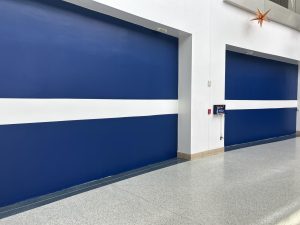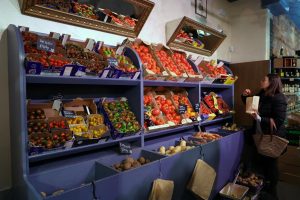New mobile printing kiosks to replace Morgan’s current system
November 30, 2018
Morgan’s campus is going through several renovations and new printing kiosks will appear as early as the spring semester of 2019 in place of the current printing system, papercut.
The Wēpa printing company will install the kiosks at strategic locations throughout campus in efforts to make printing more accessible for students and cut-down on university paper use, according to Division of Information Technology (DIT) officials.
Currently, each student is allotted $25 per semester to print with the cost of 10 cents per page. Students will be given a significantly lower allowance of $5 towards Wēpa printing. After the $5 runs out, students will be responsible for financing their own printing via the Wēpa printing app, according to Cynthia Mendoza-Robinson, Deputy CIO of Operations for DIT.
“We have been keeping track of student printing volume, how much is being spent on paper, toner printer maintenance, replacement printers…the Wēpa solution is much more cost effective for the University and provides that convenience factor for students,” she said.
Students and teachers will be encouraged to use blackboard and electronic submission in order to ease the transition, said Mendoza-Robinson.
The anticipated partnership was inspired by a meeting between the Morgan State and Towson University DIT teams.
Mendoza-Robinson recalled the day when the idea popped into her head.
“Last summer we met with the IT staff at Towson University for a completely different meeting and while sitting in one of the labs I noticed there was no printer in the lab, so I asked them ‘how do your students print’,” said Mendoza-Robinson. “They take us outside of the lab and we see this kiosk and we were intrigued.”
Her curiosity kick-started Morgan’s transition to a new system. DIT met with President David Wilson, the University Council and discussed the impending changes with members of the Student Government Association (SGA) via conference call over the summer.
According to SGA President, Kenold Pierre, they all agreed that Wēpa printing could be mutually beneficial for the university and its students.
“It will help with accessibility and is also something innovative,” said Pierre. “I know this will work and I would say [students] should give it a try…with change, people try to reject it.”
College students state-wide have been embracing the change and Wēpa is revolutionizing printing on campuses including University of Maryland (UMD) College Park, Towson University and the University of Baltimore County.
Students from UMD are already reaping the benefits of the kiosk printing system. Rhea Gupta, a sophomore public health science major, said that they are more convenient for students who do not own their own printers.
“I’d just find a random building on my way to class and it would take two minutes [to print],” said Gupta.
According to Gupta, printing is cheaper for students who download the app and use their campus cards to print.
“It’s like 10 cents per page…say you don’t have money loaded on the [campus card] and you just want to use your debit card, it’s 60 cents flat,” said Gupta.
According to Mendoza-Robinson, this is the change that Morgan’s students have been asking for.
“I think the printing process is fine but there could be more printers around campus and color printing,” said Jonathan Mitchell, sophomore business administration major. “Last year when I was in Rawlings, I wished that there was somewhere I could go to just easily print in Rawlings.”
Similar to other college campuses, the goal is to place a kiosk in every academic building and possibly if students receive the new devices well, kiosks will appear in residence halls.
“They are everywhere,” said Gupta. “Basically, in almost every academic building. Actually, I have one in my apartment as well.” Gupta lives in an off-campus, UMD owned, apartment complex.
Increased convenience comes at a cost, and Morgan students are wondering what the cost of these new devices will be.
Lamonte Summers, Assistant Professor of Media Law and Ethics in the School of Global Journalism and Communications and member of the University Council, stated that this is the first step for Morgan towards being a completely paperless campus.
“Printing is very expensive. I think students don’t understand that because when a student has a paper that’s due they might print off various drafts or various versions of it and it’s costly,” said Summers. “I’m old-school, I like hard copy because it’s easier on the eyes. I’m tactile when it comes to grading papers I want to actually have the thing in my hand. I know I’m probably becoming more and more of a dinosaur when it comes to demanding and requiring hard copies.”
Although he is hesitant, Summers believes that if teachers take electronic submissions, the students will have no choice but to adapt.
“If [professors] adapt quickly and emphasize to our students that when you submit work, it’s going to be done electronically then I guess that drop—going from $25 to $5—may not seem as impactful because students won’t be printing if all of their instructors are requiring students to submit on Blackboard,” he said.
DIT will begin setting up the kiosks at their designated locations around campus over winter break; students taking classes over the winter mini-semester will get a sneak peek at the new devices.











